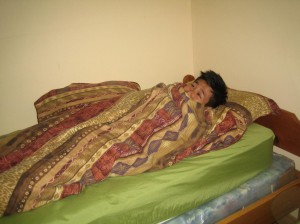Frostbite is any injury brought about by freezing of the skin and underlying body tissues. The parts of the body that are prone to this condition include the feet, toes, hands, fingers, ears and nose.
Frostbite occurs if a body part has been exposed to freezing temperatures. As a result, the temperature of the body parts drops below freezing. The body tissues and skin become frozen and the flow of blood is reduced. The condition is generally worse if the clothing or skin is also wet when exposure occurs.
Characteristics
Once the skin is affected by frostbite, it might:

- Tingle
- Turn hard, cold and pale
- Feel numb
- Blister or turn black in serious cases
Management of frostbite
In case medical attention is not on hand, the vital points in managing frostbite is to find a warm shelter and rewarming of the skin as soon as possible. The rewarming and thawing process of the affected skin involves:
- Remove any wet gloves or socks
- Instruct the individual to place his/her hands under the armpit or the feet against the belly for warmth.
- The rewarming must be continued until the skin turns pinkish and no longer numb. The process might take up to an hour and can be quite painful.
- For relief from the discomfort, pain medications such as ibuprofen, acetaminophen or aspirin for the pain.
Complete recovery from frostbite is likely if only the skin and uppermost tissue layers were affected. Nevertheless, it might take time for the affected areas to regain full sensation and strength. Oftentimes, the numbness at the tips of the toes and fingers do not improve. Take note that a body part affected by frostbite will get cold faster than other body parts in the future.
More Information / Disclaimer
The information posted on this page on frostbite is for learning purposes only. Learn to recognize the signs and how it is managed by taking a standard first aid course with Saskatoon First Aid.
